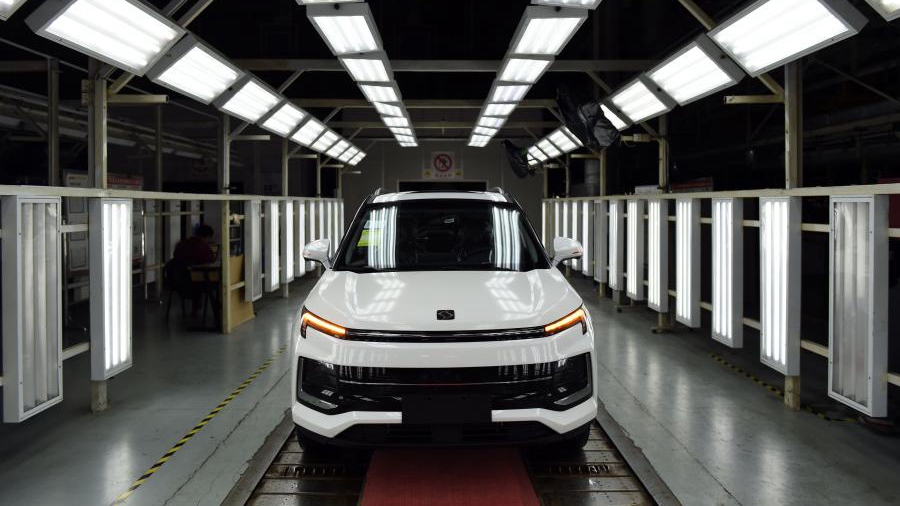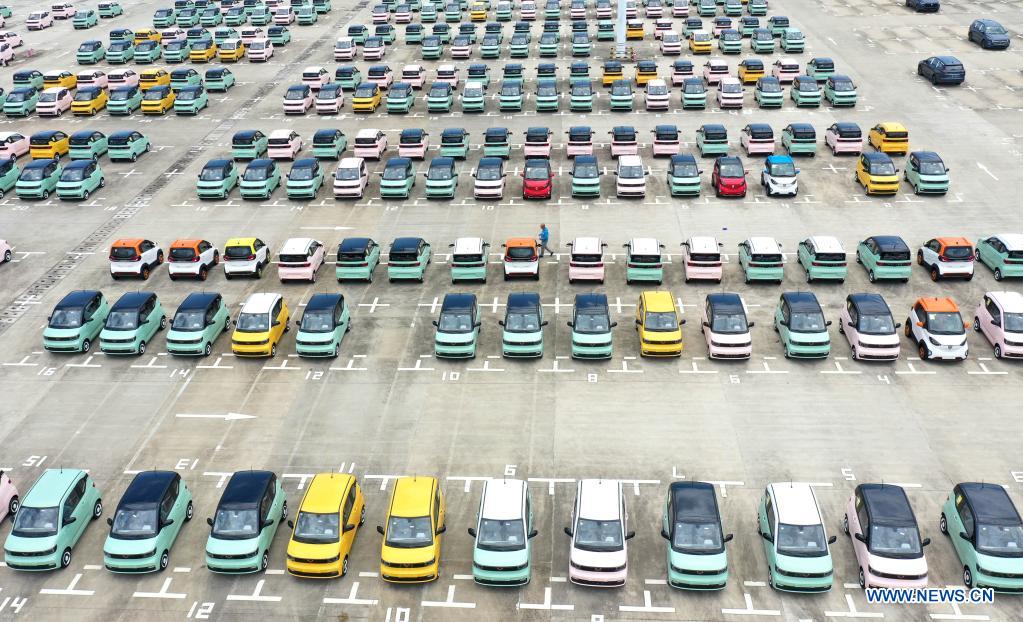
A new energy car at a Jianghuai Automobile Group Corp., Ltd. workshop in Hefei, east China's Anhui Province, November 12, 2021. /Xinhua
A new energy car at a Jianghuai Automobile Group Corp., Ltd. workshop in Hefei, east China's Anhui Province, November 12, 2021. /Xinhua
Editor's note: Wang Zhongying is the director general of the Energy Research Institute of the National Development and Reform Commission of China. Liu Jian is an associate researcher at the same institute. The article reflects the authors' opinions and not necessarily those of CGTN.
Under the initiative to achieve the country's peak carbon emissions by 2030 and carbon neutrality by 2060, the new energy vehicle (NEV) industry in China carries an important historic mission on its shoulders. It is not only a pillar industry for economic development but also a major force for rewriting the history of China's automobile manufacturing industry and building a low-carbon future.
China is the world's largest auto market, with nearly 30 million vehicles produced and sold annually. But nearly 90 percent of them are fossil-fuel-powered vehicles. It is now a global consensus to take the path of eco-friendly and low-carbon development.
It is expected that in about 10 years, fossil-fuel-powered vehicles will have given up half of their market share to NEVs, and by 2040, mainstream manufacturers will no longer sell vehicles powered by fossil fuels. Therefore, the development of NEVs, especially electric vehicles, has brought new opportunities for the development of China's automobile manufacturing industry.
After more than a decade of development, China is now the world's largest market for NEVs. In 2020, more than 10 million NEVs were in circulation worldwide, and China accounted for nearly half.

New energy vehicles at a logistics park in Liuzhou, south China's Guangxi Zhuang Autonomous Region, August 12, 2021. /Xinhua
New energy vehicles at a logistics park in Liuzhou, south China's Guangxi Zhuang Autonomous Region, August 12, 2021. /Xinhua
In 2021, despite the impact of the pandemic and the chip shortage, China's NEV market bucked the global downtrend and registered positive growth, with annual sales jumping to 3.52 million units, up 1.6 times year on year, accounting for 13 percent of all new vehicles sold. In the coming years, China's NEV market will enter a period of rapid growth, with a projected adoption rate of over 25 percent by 2025.
At the 26th UN Conference of the Parties on Climate Change (COP26) in Glasgow, several countries, including Austria, Denmark, Finland, Sweden, the Netherlands and Norway, signed a pledge that they will work toward all new cars and vans sold to be zero-emission by 2040 or earlier.
In fact, before COP26, numerous well-known manufacturers around the world, such as Mercedes-Benz, Volkswagen, BMW and Ford, had already proposed timetables for ending the production of fossil-fuel-powered vehicles. To achieve carbon neutrality, energy systems must eventually achieve net-zero emissions. So the phaseout of fossil-fuel-powered vehicles from the market is an inevitable trend in history.
The Chinese government is highly concerned about climate change. The decarbonization of transportation is regarded as one of the key measures for achieving carbon peak and carbon neutrality targets. Therefore, the Chinese government attaches great importance to the development of NEVs and has set a clear development course for the industry. In particular, the development and adoption of electric vehicles in China are already leading the world.
From a strategic point of view, the development of China's NEV industry is important because it can contribute to the low-carbon transformation of the transport sector, and electric vehicles can serve as energy storage facilities to support the new electric power system. NEVs can be integrated into the new power system to promote the massive development of wind, solar and other renewable energy sources.
To achieve peak emissions and carbon neutrality, China's economy and society will undergo a profound systemic change, and integrating NEVs with the power system will be an important catalyst for accelerating this transformation.
(If you want to contribute and have specific expertise, please contact us at opinions@cgtn.com. Follow @thouse_opinions on Twitter to discover the latest commentaries in the CGTN Opinion Section.)

